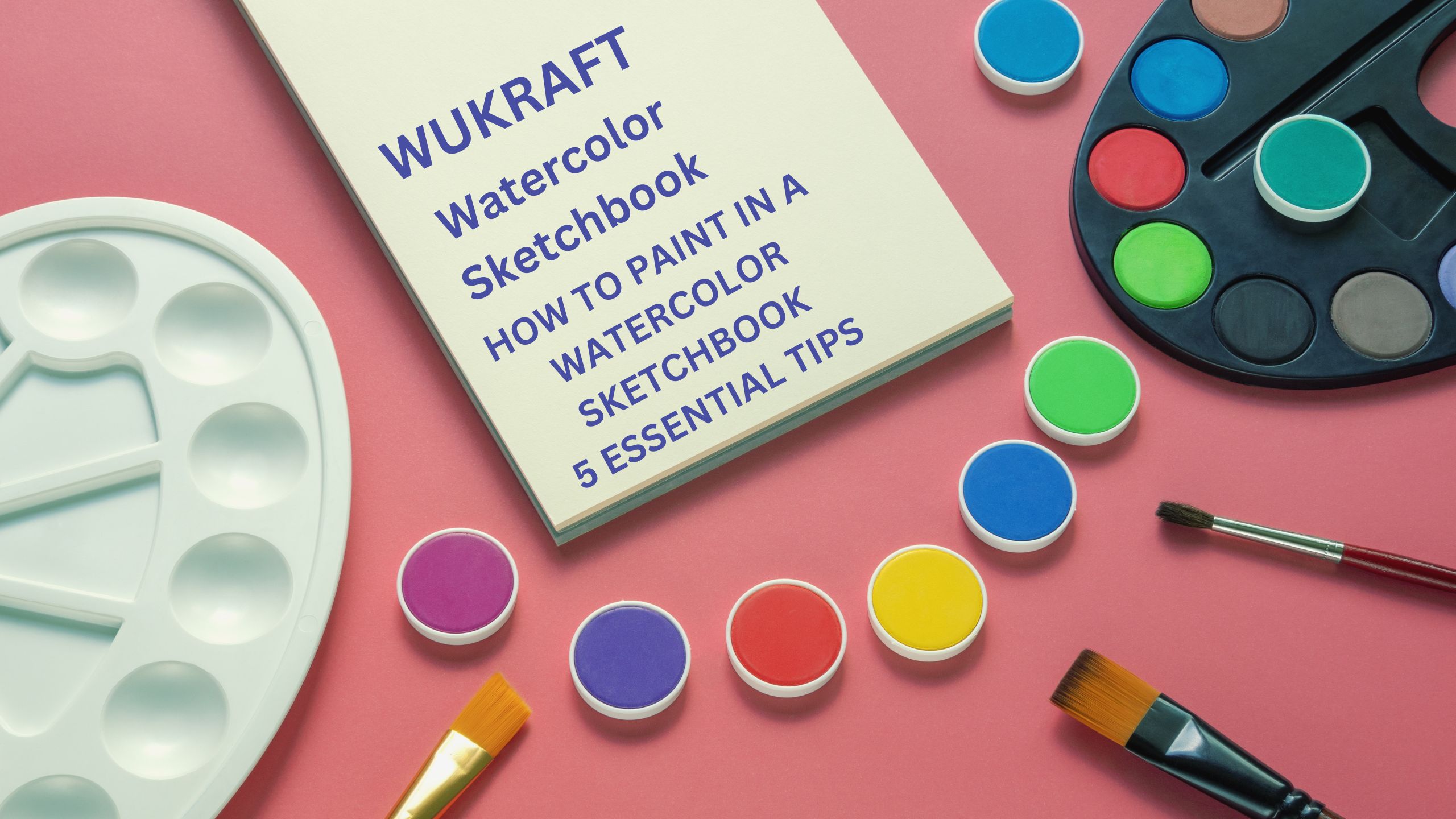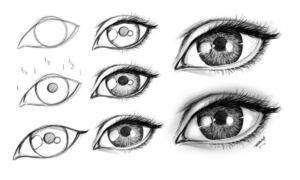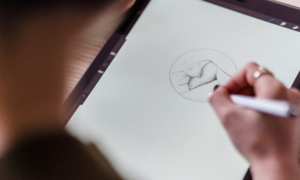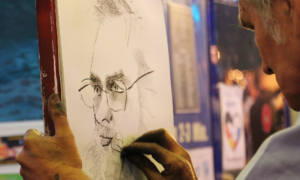Exploring watercolor painting within the confines of a sketchbook can be an incredibly captivating way to master the watercolor medium as a whole.
For many watercolor enthusiasts, the sketchbook is their artistic realm, and they rarely venture beyond it to work on larger canvases. To a certain extent, I share this sentiment.
The sheer delight of sketching and painting in a watercolor sketchbook can be immensely satisfying once you’ve tasted its unique charm. However, I understand that you’re here for practical tips on how to paint with watercolors in a sketchbook, not just a philosophical discussion.
As of the date I’m writing this article, I’ve accumulated about seven years of experience with watercolor sketchbooks. So, I’m excited to share all the practical advice you need to embark on your watercolor journey in a sketchbook. The best part is, you don’t need to be a watercolor virtuoso to excel in this medium.
Before we dive into the tips, let me briefly address the question that’s likely on your mind: “How do you paint with watercolors in a sketchbook?”
Painting with watercolors in a sketchbook is a straightforward and minimalist process. You can choose a sketchbook with watercolor-friendly paper or even create one by selecting the paper that suits your preferences. In this medium, you work with a single brush (preferably), a limited palette of colors, and you focus on simple, often overlooked subjects from your daily life. Many artists use a pencil or a waterproof ink pen for initial under-drawings, but there’s no strict rule regarding this. Painting in watercolor sketchbooks serves various artistic purposes, and it has evolved into a sub-genre within watercolor art. There’s a vibrant global community of like-minded artists who engage in this practice on a daily basis.
Now, let’s dive into the tips that will not only help you get started with your first watercolor sketchbook but also prepare you for the exciting artistic journey that lies ahead.
I’ve seen many artists get stuck in a cycle of endlessly searching for the best sketchbook before they even start painting. This is a mistake!
1. Don’t worry about finding the perfect watercolor sketchbook on your first day.
It’s perfectly fine to start with the sketchbook you already have, or the one that you can afford. The most important thing is to just start painting. Don’t worry about whether or not your end result will be perfect. The more you paint, the better you’ll become, and the better you’ll understand what you need in a sketchbook.
Here are some additional tips for choosing a watercolor sketchbook:
• Consider the weight of the paper. Watercolor paper is typically thicker than regular drawing paper, which helps to prevent the paint from buckling or warping the paper. A good weight for beginners is 140 gsm.
• Think about the surface texture of the paper. Watercolor paper is available in a variety of surface textures, such as cold press, hot press, and rough. Cold press paper has a slight tooth to it, which gives your paintings a nice texture. Hot press paper is smoother, which is ideal for creating detailed paintings. Rough paper has a very pronounced tooth to it, which can be used to create dramatic effects.
• Choose a sketchbook with a sturdy binding. You don’t want your pages falling out when you’re trying to paint! A spiral bound or glue bound sketchbook is a good choice for beginners.
Once you have a few different sketchbooks, experiment with them to see which one you like best. There is no right or wrong answer, it all comes down to personal preference.
The most crucial idea here is to commence your creative journey. Don’t be too concerned about the initial results possibly not meeting your expectations. Trust me, you’ll improve as you keep turning the pages forward.
2. Embrace a Minimalistic Approach: Tools and Color Palette
Once again, I’d like to emphasize the importance of keeping things “minimal.”
You don’t need an extensive array of colors to craft something truly beautiful. In fact, even with a solid grasp of color theory, you can achieve a wide spectrum of colors using just the primary ones. But how do you develop this understanding of color theory? The answer lies in hands-on practice, not merely in watching a YouTube video (as I learned from my own experience, which I’ll share as an example).
Given that the pages of a typical watercolor sketchbook are usually compact, employing a limited color palette is advantageous. It leads to paintings that appear more vibrant and fresh. Regardless of whether you’re a beginner or a seasoned artist, commencing your artistic journey with a minimalist color palette is a fantastic way to hone your grasp of color theory.
3. Use a drawing pencil or a waterproof ink pen for the base drawing.
This is especially important when painting in a watercolor sketchbook, as the paper is usually small and you don’t want the pencil lines to show through the paint.
If you are using a pencil, choose a light-pressure pencil, such as a 2H or 3H. This will help to prevent the pencil lines from indenting the paper.
If you are using a pen, choose a waterproof ink pen. This will prevent the ink from running or bleeding when you apply the watercolor paint.
Once you have finished the base drawing, you can start painting. Be careful not to overpaint the base drawing, as this can make the colors muddy.
Here are some tips for using a drawing pencil or a waterproof ink pen for the base drawing:
• Use a light touch. You don’t want to indent the paper or make the ink lines too dark.
• Start with simple shapes. Once you have the basic shapes down, you can add details.
• Be careful not to overdraw. It’s better to underdraw and then add more detail as needed.
• If you make a mistake, don’t worry. You can always erase it if you’re using a pencil, or cover it up with paint if you’re using a pen.
Experiment with different techniques and see what works best for you. There is no right or wrong way to do it.
Here are some additional tips for using a drawing pencil or a waterproof ink pen for the base drawing in a watercolor sketchbook:
• Consider the size of the sketchbook page. If you are working on a small page, you may want to use a smaller pencil or pen tip.
• Use light, delicate pencil lines. You don’t want the pencil lines to be too dark or they will show through the paint.
• If you are using a waterproof ink pen, use a pen with a fine tip. This will give you more control over your lines.
• Once you have finished the base drawing, let the ink dry completely before you start painting. This will prevent the ink from bleeding.
Using a drawing pencil or a waterproof ink pen for the base drawing is a great way to create beautiful and detailed watercolor paintings in your sketchbook. With a little practice, you will
be able to master this technique.
4. Avoid Excessive Detail; Focus on Capturing the Essence
The primary purpose of using sketchbooks is to swiftly encapsulate the core essence of a subject. This initial rendering can serve as a reference for more detailed artworks in the future.
For now, keep your brushstrokes, layers, and color application in your sketchbook painting to a minimum. Your goal should be to convey the essence of the subject with suggestive strokes that create the illusion of a three-dimensional presence.
Mastery of this technique heavily relies on practice and honing your skills, as the two go hand in hand. The key mindset to maintain is a constant awareness of how to capture the most vital details of your subject while ensuring nothing significant is overlooked.
By adopting this approach, you’ve already conquered a significant portion of the challenge posed by the watercolor medium.
5. Embrace Speed in Your Artistry
To capture the essence of your subject effectively, it’s imperative to work swiftly. While speed can occasionally lead to errors, in the realm of art, such mistakes are of little consequence.
Think of your sketchbook as a trusted confidant where certain artistic secrets can be safely stored. So, don’t hesitate to be quick in both your drawing and painting process.
In my quest to understand the typical time frame for artists to complete a painting in a watercolor sketchbook, I reached out to some fellow artists. After averaging their responses, it became apparent that the average duration for such work is around 18 minutes. I believe this timeframe is quite reasonable for wrapping up a watercolor piece in a sketchbook.
In my personal practice, I tend to invest a bit more time, typically landing in the range of 25 to 30 minutes. Nevertheless, I’m actively striving to accelerate my creative process because I’ve realized that the swifter I paint, the more vibrancy and freshness infuse my artwork.




